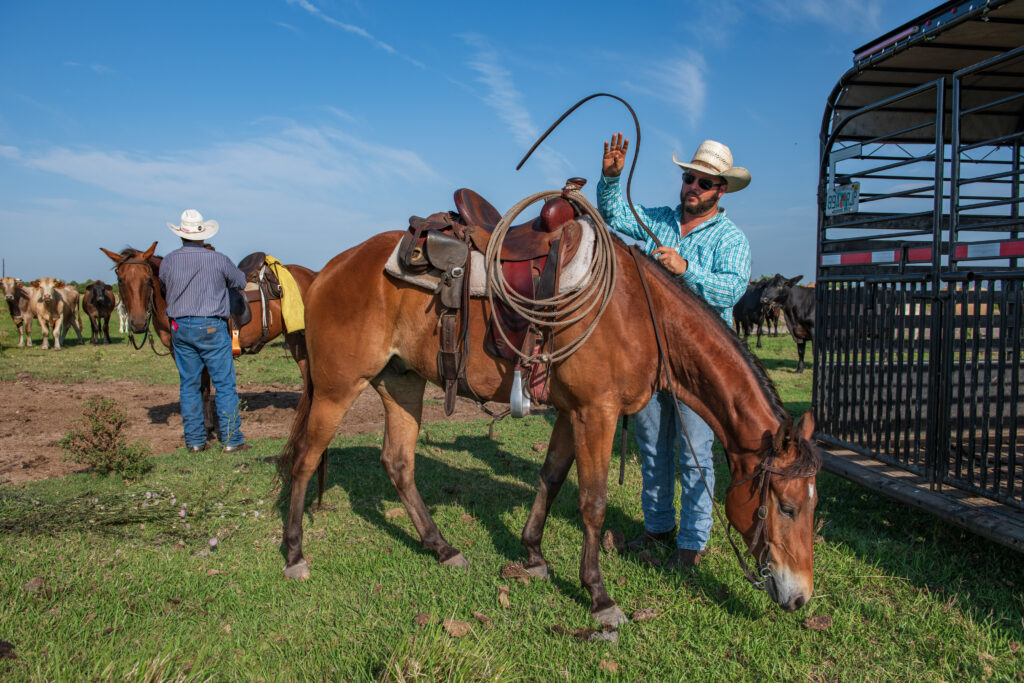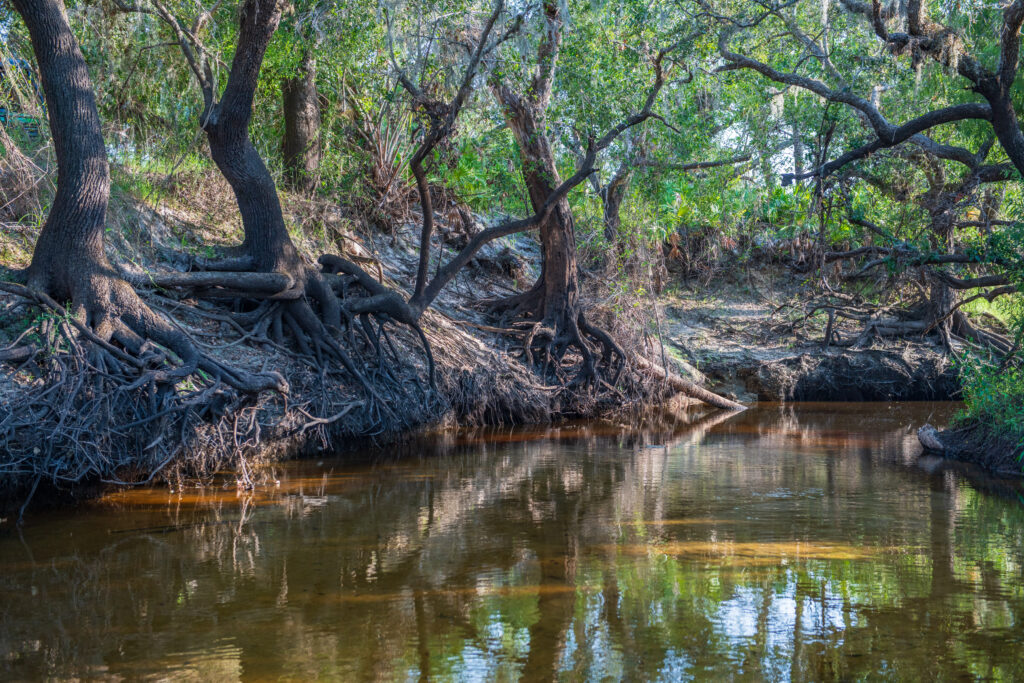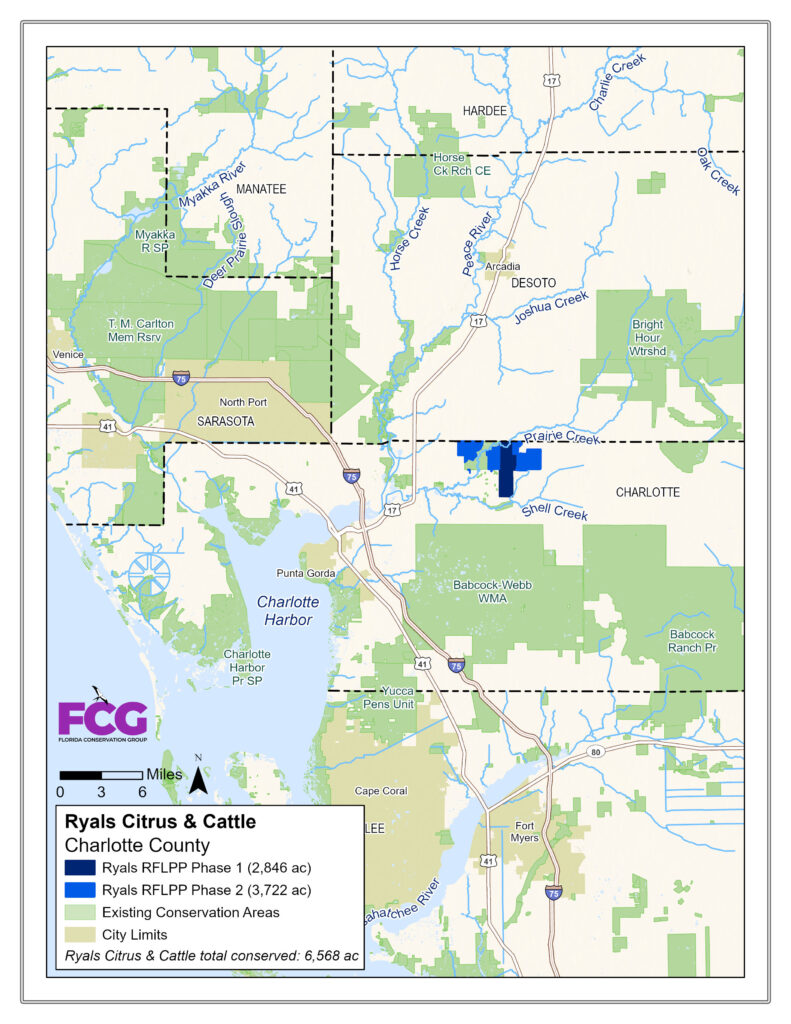State conserves 3,700 acres of a rancher’s land in Charlotte County
By Garry Overbey | Florida Weekly

As a fourth-generation cattle rancher with deep roots in Charlotte and DeSoto counties, Jay Ryals has seen many family farms and ranches disappear due to the rapid pace of development.
“When I was growing up, there were so many big ranches around,” said Ryals, noting the diminishing green space in the Sunshine State.
“And once they’re gone, you can’t get them back.”
Now, thanks to recent efforts by state and federal officials, as well as conservationists, Ryals is confident his family’s ranching efforts can continue for generations to come.
The Florida Cabinet on March 5 approved a deal placing the last part of Ryals Citrus and Cattle’s Charlotte County holdings under a conservation easement, which allows the property to remain a working cattle ranch and watermelon farm while protecting the property’s creeks and wildlife habitat from development.
Florida Agriculture Commissioner Wilton Simpson called the approval “a major victory for Florida’s hardworking farmers and ranchers, who are the backbone of our state’s economy and way of life.”
For conservationists, it’s a major win for Southwest Florida’s water supply and wildlife.
“All of that rural land protects the tributaries in the river which feed the drinking water in Charlotte Harbor,” said Julie Morris, executive director of the Nokomis-based Florida Conservation Group (FCG). “There’s tremendous development pressure in that area, and so we’re really trying to protect our most important lands — protect those tributaries, protect agriculture, protect our natural resources in that region.”
The FCG shepherded the easement through the state’s Ru- ral and Family Land Protection Program and the federal Natural Resources Conservation Service (NRCS) Agricultural Land Easement Program, which split the cost 50/50.
The state-federal pairing purchased development rights to 3,722 acres of the Ryals property for about $13.2 million. With 2,845 acres placed under easement last year, all of the Ryals family’s Charlotte County holdings are now protected.

Photo by Lauren Yoho / Wildpath. Learn more at Wildpath.com/progress. When using in media or social media, please credit “Photo by Lauren Yoho / Wildpath” and provide tags to @leyoho and @wildpath.
“This land has not been sold to the state,” Morris clarified. “It just basically means the development rights have been given over to the state. That means the land can never be developed.”
Not for sale
A conservation easement allows the state to protect its natural resources while the owner keeps the land. It’s “cents on the dollar” cheaper than a land purchase, Morris said.
“There is never going to be enough funding to buy all of that land outright,” Morris said. “Nor do landowners necessarily want to sell their land outright to the state or federal government. But conservation easements are a tool that we can use where … that land stays on the tax rolls, and the landowner has to keep that land — as it is now — forever.”
The Ryals property sits about 12 miles east of Port Charlotte along the border of DeSoto County. The acreage bridges Shell Creek and Prairie Creek, which both feed into the Shell Creek Reservoir, a major source of drinking water for Punta Gorda and unincorporated parts of Charlotte County.
Morris said her organization is making a “big push” to protect the lands and waters of the Peace River valley, which are essential to the health of Charlotte Harbor, the state’s second-largest estuary.
“The Peace River supplies the drinking water to over a million residents in Southwest Florida,” she said. “Plus, it’s the major freshwater source to Charlotte Harbor. So, we work really closely with our state and federal programs to protect ranch lands all over Southwest and South Central Florida.”
The easement makes the Ryals property contiguous with conservation lands in Babcock Ranch and Myakka River State Park, and marks off more conserved land in the Florida Wildlife Corridor.
“This Ryals piece is a very important linkage when we talk about, for example, panthers being able to get from one big conservation area to another,” Morris said.
Charlotte County is the fifth-fastest growing metro area, according to the U.S. Census Bureau. Given the area’s growing population, the push to develop rural areas pressures farmers and ranchers.
A family heritage
“There’s a tremendous pressure to sell to solar and/or residential and commercial development,” Morris said. “And it gets harder and harder to manage your land when you are backed up against residential and commercial development, and land in agriculture and manage that land in perpetuity, which is a long time. They just sold the development rights forever.”
Ryals said “development pressure” motivated his family to pursue the easements.
The 6,500-acre property is bordered by a residential subdivision and solar fields owned by Florida Power & Light. FPL has bought more land south of the ranchlands near Shell Creek.
“It’s really important to us, especially me being fourth generation,” Ryals said, “but for the fifth generation, too, it’s really about preserving (the land) for them and, really, for everybody.”
His family has worked the land going back to his great-grandfather, Henry D. Ryals, in 1924. Florida at that time had more land for grazing, and Ryals’ cattle spread across the region’s open range from Tampa to Punta Rassa.
In 1988, the year Jay Ryals was born, his father diversified the family’s cow-calf operation by plowing land for watermelons.
“Green space and clean water is such a huge concern for everyone,” Ryals said, “and this allows us to be in a place where we can help conserve water, and we’re able to continue doing what we’re doing.”
Through the Rural and Family Lands Protection Program, the state has permanently preserved more than 205,000 acres.
Ryals praised Simpson and the state’s efforts to save working farms and ranches.
“I’m proud of my heritage and where I come from and what my family has built before me,” Ryals said. “And I really want to continue that legacy of conservation and protecting the land that I feel that God has entrusted us to take care of.”

